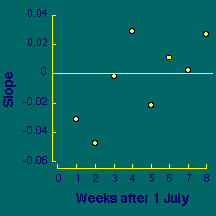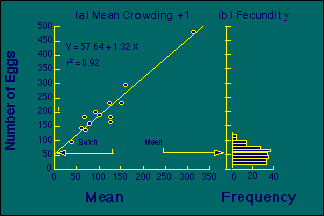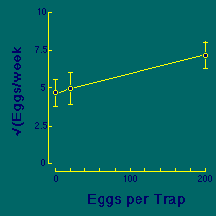Oviposition
Responses of egg-laying female mosquitoes to the density of larvae (J. S. Edgerly, M. McFarland, P. Morgan, T. Livdahl, 1998)
We tested a set of hypotheses, based on previous ecological studies, to predict egg-laying behaviour in Ochlerotatus triseriatus in the field in Massachusetts. These hypotheses were in three main categories: females avoid immediate competitive or predatory threats to their larvae; females judge larvae or eggs as cues to future permanence, productivity, or competition within a treehole; or females hedge their bets by scattering their eggs in multiple habitats. We also predicted that mosquitoes might vary in their response depending on whether their offspring will hatch immediately or enter diapause and hatch the next year. We stocked artificial treeholes with larvae at four densities ranging from 0 to 90 larvae per habitat for four trials in 1992 and eight trials in 1994. In 1992, we added predatory Anopheles barberi larvae to half the replicates of each density level. In 1994, we tested for an interaction between egg and larval density by stocking additional traps with eggs in batches of 0, 20 and 200, and larvae in densities as in the previous trials.
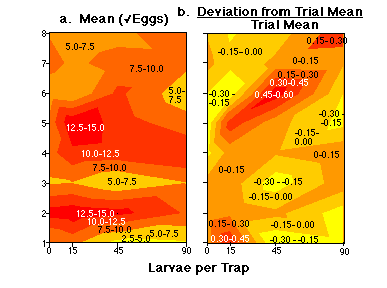
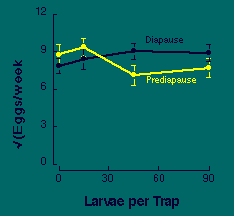
The population showed a significant interaction between time of year and larval density (1). Eggs accumulated more in oviposition traps stocked with lower densities of larvae early in the season, but females showed a preference for higher-density traps later on, after their offspring were all likely to enter egg diapause (2). This may be the first report of a seasonal shift in egg-laying decisions in an insect; the results suggest that potential ambiguities of larval cues, with indications of habitat permanence as well as adversity of future competition, are resolved by females. Females did not respond differentially to the presence or absence of Anopheles barberi larvae. The estimated batch size obtained in oviposition traps did not differ from the fecundity of field-caught females allowed to oviposit in laboratory vials (3), suggesting that bet-hedging by scattering of eggs among multiple habitats did not occur. An unexpected positive influence of egg density was found, (4), in conflict with our predictions based on females choosing less competitive environments for their larvae and contrary to previously published accounts of avoidance of eggs in this species.
